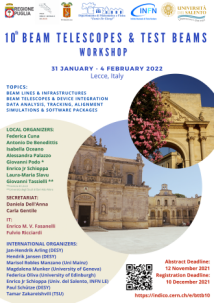Conveners
Overview Lectures: I
- Federica Oliva (The University of Edinburgh (GB))
Overview Lectures: II
- Magdalena Munker (University of Geneva)
Overview Lectures: III
- Maria Robles Manzano (Johannes Gutenberg Universitaet Mainz (DE))
Overview Lectures: IV
- Paul Schütze (Deutsches Elektronen-Synchrotron (DE))
The lecture covers the basics of the secondary and tertiary beam generation for the test beams at CERN. It covers the basics of beam-matter interaction and summarises the processes of secondary particles production at the target stations. It introduces the Atherton parametrisation and the particle zoo available at CERN North Area. Subsequently, it covers the design of transfer beam lines, beam...
Hybrid pixel detectors were first developed to address the needs of particle tracking at the heart of the large LHC experiments. The key property of these detectors is the ability to detect particles with a high signal to noise ratio even at very high speed permitting clean reconstruction of the LHC events. In the Medipix project we adapted the same hybrid pixel approach firstly to X-ray...
A very hot topic in radiation oncology is so-called FLASH therapy which involves delivering an entire radiation treatment in a few hundred ms, or less. This fast delivery can reduce toxicity to healthy tissue while maintaining tumor control expanding the parameter space for treatment. The effect has been observed in experiments and clinical translation is now underway. As part of this effort,...
Transition radiation detectors is one of the not destructive particle Identification techniques widely used in high energy and cosmic-ray physics.
The change of the electromagnetic field of a charged particle at a transition between media with different refractive indices leads to the emission of electromagnetic radiation, so-called transition radiation (TR). In the optical range transition...
